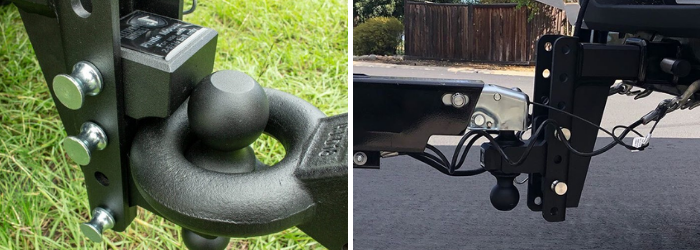
When it comes to bumper towing, the two main hitch types to keep in mind are ball hitches and pintle hitches. Ball hitches are typically used on vehicles that are towing small boats or trailers and are most common for recreational purposes. Ball hitches attach to a trailer coupler and are available in 3 different ball sizes (1-7/8”, 2”, or 2-5/16”). The trailer coupler is typically a tighter fit with less movement between the ball and coupler. There are definite pros to this because it creates a smoother towing experience, but it also has its drawbacks. For instance, the tighter fitting coupler has less maneuverability both vertically and horizontally when making turns and has a lower towing capacity than the pintle hitch.
Pintle hitches on the other hand, are typically used with larger trailers and have higher weight capacities than ball hitches. Pintle hitches are commonly used for industrial, military, or agricultural applications. Pintle hitches also allow for more movement at the attachment point than ball hitches. The range of movement provided by pintle hitches when attached to the lunette ring makes the hitch ideal for towing on uneven surfaces like off-road terrain.
While there are a number of benefits to using a pintle hitch, there are also some drawbacks associated with the extra range of motion including a much rougher, noisier ride. Pintle hitches are also usually not compatible with weight distribution systems.
Now, knowing the difference between a pintle hitch and a ball hitch, you can better decide which towing application is right for you. Luckily, BulletProof Hitches offers a solution that supports both towing applications all with one hitch. Our BulletProof Pintle Attachment allows you to easily switch between coupler trailers and pintle trailers by simply attaching our pintle block with one pin.
For additional information on the differences between pintle and ball hitches or about Our BulletProof Pintle Attachment, contact our team here at BulletProof Hitches. 941-251-8110
